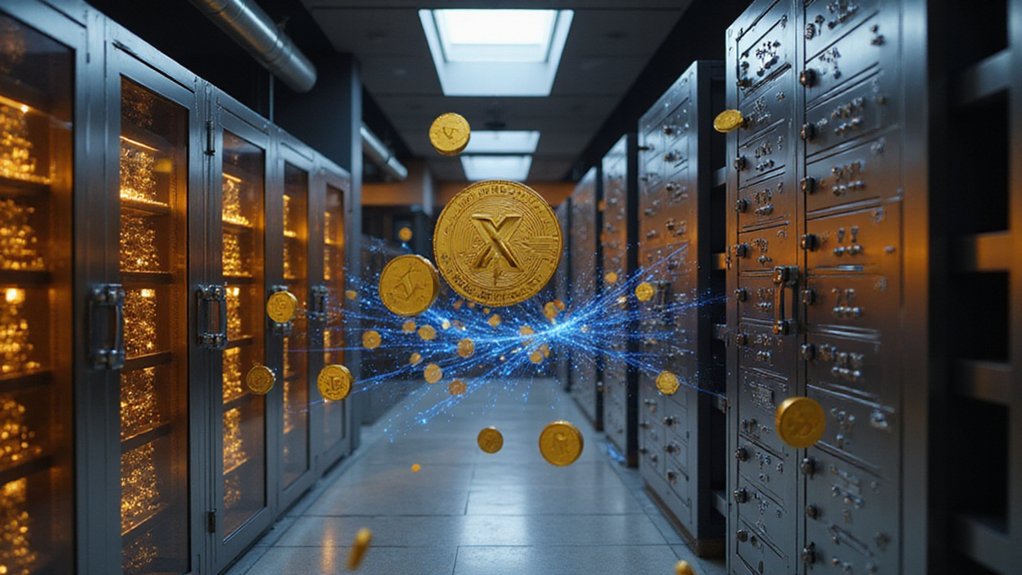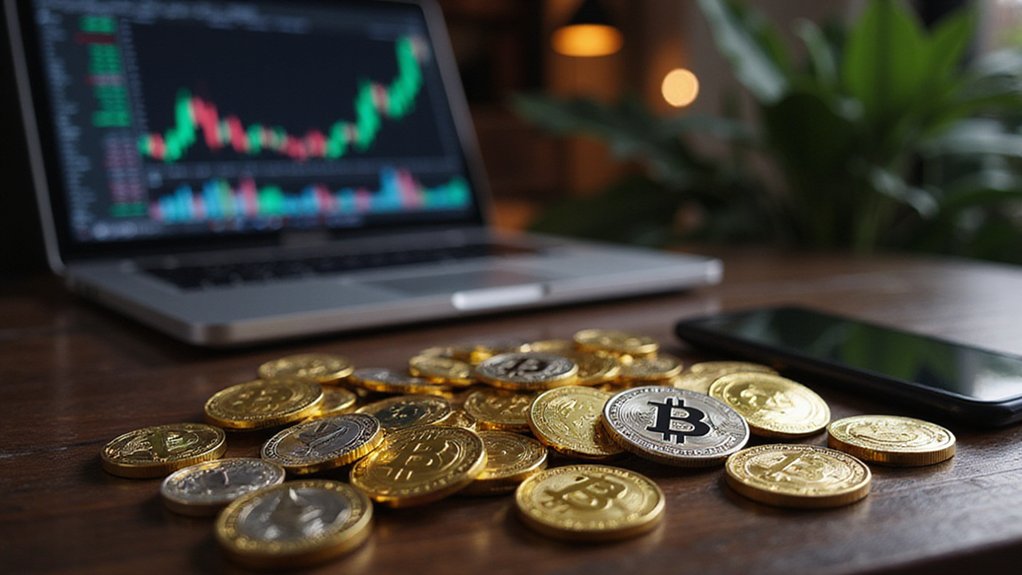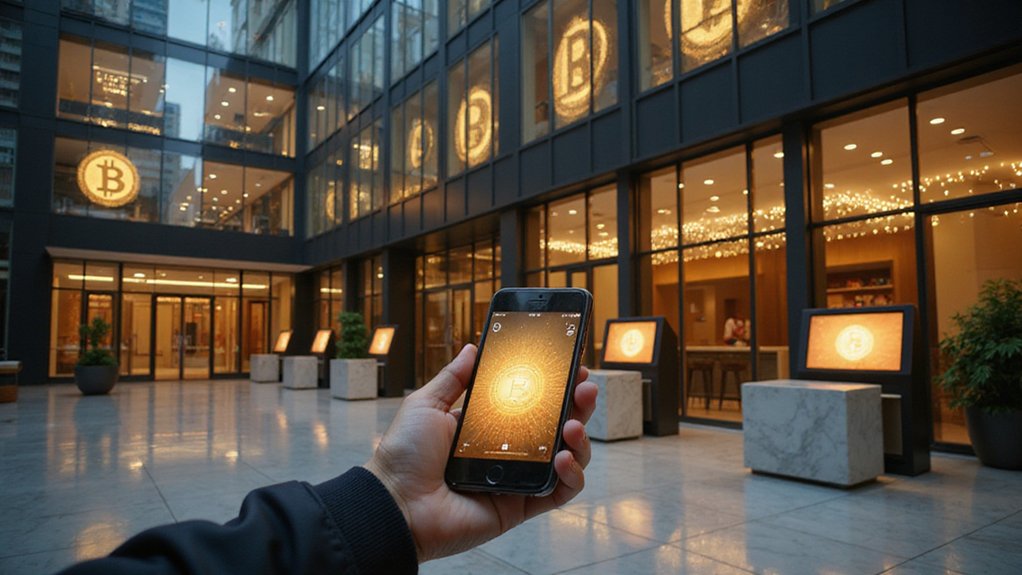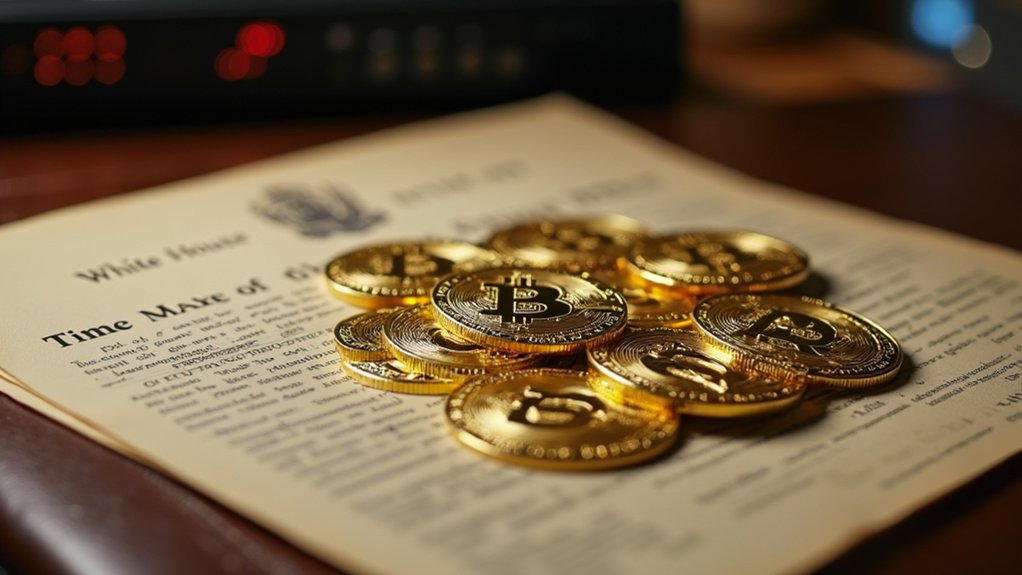XRP functions as institutional banking infrastructure rather than speculative cryptocurrency, enabling cross-border settlements in 3-5 seconds while traditional correspondent banking somehow requires multiple days in our digital age. Ripple’s bridge currency eliminates pre-funded nostro accounts, reducing transaction costs through energy-efficient consensus mechanisms that major financial institutions across continents have increasingly adopted throughout 2024. The XRP Ledger processes thousands of transactions per second with immutable audit trails, addressing regulatory compliance while maintaining technological advantages that position it uniquely within evolving financial landscapes where further exploration reveals additional operational complexities.

While traditional banking systems lumber through cross-border transactions with the efficiency of a bureaucratic sloth—often requiring multiple days, intermediary banks, and fees that would make a Renaissance money changer blush—XRP and its corporate progenitor Ripple have positioned themselves as the antithesis to this glacial infrastructure.
XRP operates as the native token of the XRP Ledger, functioning as a bridge currency that eliminates the need for pre-funded nostro accounts (those delightfully antiquated vaults of dormant capital that banks maintain globally). Rather than watching funds meander through correspondent banking networks like tourists without GPS, financial institutions can leverage XRP to settle transactions in 3-5 seconds—a timeframe that would have seemed mythical to traditional bankers accustomed to multi-day settlement periods.
The technology’s appeal extends beyond mere speed. Transaction costs plummet thanks to XRP’s energy-efficient consensus algorithm, which sidesteps the environmental apocalypse and computational expenses associated with proof-of-work blockchains. This efficiency enables RippleNet’s On-Demand Liquidity service to provide instant funding for cross-border payments without the currency volatility risks that typically plague international transfers. The XRP Ledger’s commitment to green infrastructure positions it as the most environmentally sustainable blockchain solution for banking applications.
The banking sector’s adoption trajectory reveals institutional confidence in XRP’s utility. Major financial institutions across Asia, Europe, and the Americas have integrated or piloted RippleNet solutions, with U.S. banks particularly embracing XRP for international transactions throughout 2024—a development that legitimized the cryptocurrency’s banking credentials after years of regulatory uncertainty. Unlike decentralized finance platforms that eliminate traditional intermediaries through smart contracts, XRP works within existing banking frameworks to enhance rather than replace institutional infrastructure.
Ripple’s navigation of legal challenges, particularly regarding XRP’s classification in the United States, has proven vital for mainstream acceptance. The company’s integration of anti-money laundering and know-your-customer compliance within its solutions addresses regulatory concerns while maintaining the technological advantages that attracted banks initially. Ripple employs an interledger protocol to connect disparate financial systems, functioning similarly to how TCP/IP enables internet communication across different networks.
The XRP Ledger’s scalability—processing thousands of transactions per second—combined with immutable blockchain records providing transparent audit trails, offers banks a compelling alternative to traditional correspondent banking’s labyrinthine processes.
Frequently Asked Questions
What Makes XRP Different From Other Cryptocurrencies Like Bitcoin and Ethereum?
XRP distinguishes itself through laser-focused banking optimization rather than Bitcoin’s store-of-value proposition or Ethereum’s smart contract ecosystem.
Processing 1,500 transactions per second (versus Ethereum’s pedestrian 15-30 tps), XRP settles in four seconds with negligible fees—precisely what financial institutions demand for cross-border payments.
Its fixed 100-billion token supply and Federated Byzantine Agreement consensus prioritize speed over decentralization purists’ preferences, creating a purpose-built SWIFT alternative.
How Does Ripple’s Consensus Mechanism Work Without Traditional Mining?
Ripple sidesteps mining’s energy-intensive theatrics through trusted validator nodes that exchange transaction proposals in rapid voting rounds.
These permissioned servers—rather charmingly eliminating the computational arms race—reach supermajority consensus within seconds, finalizing immutable ledger states.
The protocol maintains fault tolerance while validators collectively verify transactions without competitive dynamics.
This approach achieves transaction finality in mere seconds, prioritizing efficiency over the somewhat masochistic proof-of-work paradigm favored elsewhere.
Can XRP Be Mined or How Are New Tokens Created?
XRP cannot be mined—all 100 billion tokens were pre-created at genesis, making traditional mining irrelevant.
No new XRP enters circulation through computational work or staking rewards. Instead, Ripple manages distribution through escrow releases and market operations.
Paradoxically, transaction fees actually burn XRP, reducing total supply over time.
While other tokens can be issued on the XRP Ledger through smart contracts, XRP itself remains fixed in quantity.
Why Do Some Banks Choose XRP Over Traditional SWIFT Transfers?
Banks gravitate toward XRP over SWIFT primarily for speed and cost arbitrage—settling transactions in seconds rather than days while slashing fees from $10-50 to mere fractions of a penny.
The elimination of nostro account pre-funding (a capital efficiency nightmare) through Ripple’s On-Demand Liquidity proves particularly compelling.
However, this efficiency gain comes bundled with cryptocurrency volatility exposure and regulatory uncertainty—a trade-off that makes traditional bankers alternately excited and queasy.
What Regulatory Challenges Does XRP Face in Different Countries?
XRP navigates a regulatory minefield where classification as a security remains contentious—particularly given the SEC’s prolonged legal warfare.
Different jurisdictions offer wildly varying approaches: Dubai embraces it with operational licenses, while stricter securities regimes remain skeptical.
The absence of ISO 20022 compliance complicates traditional banking integration, though Ripple’s 60+ licenses suggest progress.
Regulatory ambiguity persists globally, creating uncertainty that undermines the swift transfer advantages previously discussed.









